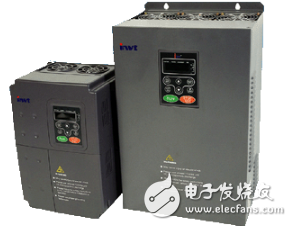Many people often ask, "Why doesn't the inverter come with a leakage protector?" In fact, by asking this question, you're already misunderstanding the basics. According to the standard operation principles of inverters, it's important to know that using a leakage protector with an inverter is not recommended at all. But why is that? Let’s take a closer look today.
Some users might try to install a leakage protector for their inverter, thinking it adds an extra layer of safety. However, this can lead to serious problems. The result is usually that the inverter trips along with the leakage protector, causing the entire system to shut down completely.
So, why does this happen?
The main reason lies in how a leakage protector works. It detects any imbalance in the current flowing through the three-phase lines. If there's even a small difference between the currents, the protector will trip. However, when using an inverter, the output is a PWM (Pulse Width Modulation) signal, which introduces high-frequency components and capacitive effects in the motor cable.
When the motor cable is long or has a shielding layer, it creates a capacitance effect between the cable and the ground. As the inverter operates, this capacitance charges and discharges, creating a small but continuous current that flows into the earth and back through the grounding wire. This current is enough to trigger a standard leakage protector, leading to unnecessary tripping and system shutdowns.
Therefore, it's best to avoid using a leakage protector on the input side of the inverter. Instead, ensure proper grounding of the equipment to maintain safety without compromising performance.

Case Example:
Q: A 18.5KW boiler induced draft fan is connected to a 18.5KW inverter. After installation, the power distribution room keeps tripping.
A: Originally, each circuit had a leakage protector set at 200mA (action) and 30mA (pulse). The customer refused to remove the leakage protector. They tried adjusting the carrier frequency to 1kHz and changing the inverter's start mode, but the problem remained unsolved.
Eventually, it was suspected that the motor's power line had a leakage issue. The cable was about 20 meters long and buried underground, making replacement difficult. The original power frequency worked fine, so the problem was likely related to the inverter's operation.
Solution: Since leakage protectors typically trip when the three-phase current imbalance exceeds 20%, and inverters often cause imbalances over 50%, it's no surprise the system kept tripping. Here are some possible solutions:
Method 1: Some leakage protectors have an adjustable sensitivity setting. You can increase the threshold to reduce false tripping.
Method 2: Replace the standard leakage protector with one specifically designed for inverter use. These models are more compatible with the high-frequency signals produced by inverters.
Method 3: Increase the load on the motor. When the inverter starts, the leakage current is less significant if the motor is under a heavier load.
Method 4: Shorten the length of the motor cable. This reduces the capacitance effect and minimizes the chances of triggering the leakage protector.
In summary, while it may seem logical to add a leakage protector for safety, doing so with an inverter can cause more harm than good. Proper grounding and careful selection of protection devices are the better approach for ensuring both safety and system stability.
Shaanxi Xinlong Metal Electro-mechanical Co., Ltd. , https://www.cnxlalloys.com